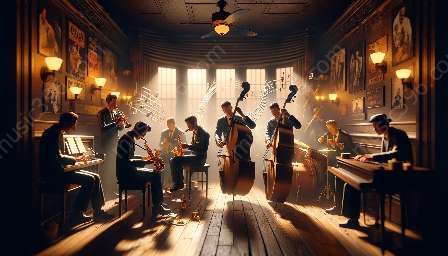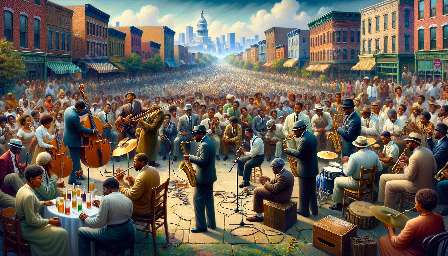When it comes to appreciating the depth and complexity of music, exploring the motifs and thematic development in jazz and classical music is essential. This topic cluster will delve into the nuances of both genres, emphasizing the comparisons between jazz and classical music, while also highlighting the influence of jazz and blues on musical expression.
Comparisons Between Jazz and Classical Music
Jazz and classical music are two distinct genres that have evolved from different cultural and historical contexts. However, they share certain fundamental elements and principles, such as the use of motifs and thematic development, which provide an intriguing basis for comparison.
One of the key differences between jazz and classical music lies in their approach to composition and improvisation. While classical music is often characterized by meticulously notated compositions, jazz places a strong emphasis on improvisation and spontaneity. This fundamental distinction significantly impacts the way motifs and themes are developed in each genre.
In classical music, motifs and themes are typically developed through intricate processes of variation and transformation. Composers carefully mold and develop musical ideas, often adhering to specific structural forms such as sonata-allegro or theme and variations. Motifs are subjected to systematic development, leading to coherent and cohesive musical narratives.
On the other hand, jazz's approach to motif and thematic development is deeply rooted in improvisation. Jazz musicians often explore motifs and themes through spontaneous interaction and reinterpretation during performances. This freer approach to development allows for a dynamic and ever-evolving exploration of musical ideas, providing a unique form of expression.
Influence of Jazz and Blues on Musical Expression
An essential aspect of understanding motif and thematic development in jazz music is recognizing the influence of blues. The blues, with its distinct melodic and harmonic features, has had a profound impact on jazz music, shaping the way motifs and themes are expressed and developed within the genre.
Blues motifs, characterized by recurring melodic and harmonic patterns, infuse jazz with emotive and soulful elements. These motifs serve as the foundation for improvisatory exploration in jazz, allowing musicians to build upon the raw emotional expression embedded within the blues tradition.
Moreover, the thematic development in jazz often reflects the call-and-response structures inherent in blues music. Jazz musicians engage in expressive dialogues, exchanging musical motifs and themes in a manner reminiscent of the call-and-response tradition, creating dynamic musical narratives that captivate audiences.
Classical music, on the other hand, draws inspiration from the rich traditions of European art music, emphasizing formal structures and harmonic complexity. Thematic development in classical compositions often adheres to a strict adherence to established forms and conventions, leading to meticulously crafted and elaborately developed motifs and themes.
Nuanced Differences and Similarities
While the nuances of motif and thematic development in jazz and classical music may seem distinctive, there are underlying similarities that reveal the interconnected nature of these genres. Both jazz and classical music employ motifs and thematic development as vehicles for musical expression, albeit through different processes and contexts.
Furthermore, the shared history of jazz and classical music has led to instances of cross-pollination, where jazz musicians have drawn inspiration from classical motifs and themes, and classical composers have incorporated elements of jazz into their compositions. This interplay contributes to the richness and diversity of musical expression, highlighting the intricate relationship between these two genres.
Conclusion
Exploring the motifs and thematic development in jazz and classical music provides valuable insights into the intricate artistry and expressive potential of these genres. By understanding the nuanced differences and similarities, as well as the influence of jazz and blues on musical expression, we gain a deeper appreciation for the depth and complexity of music. This examination fosters a greater understanding of the interwoven connections between jazz and classical music, enriching our musical experiences and perspectives.






























